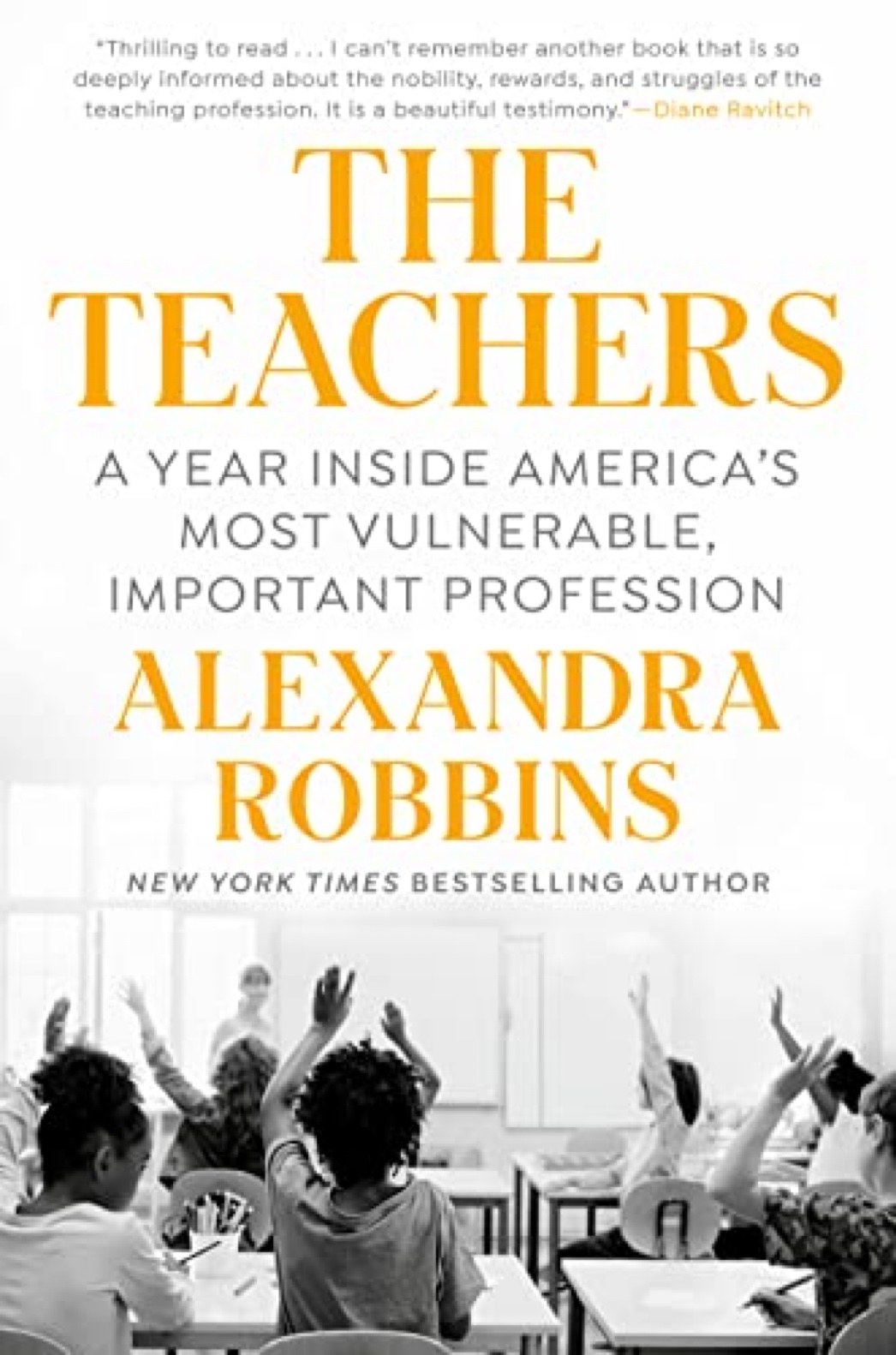
The Teachers: a Year Inside America’s Most Vulnerable, Important Profession by Alexandra Robbins is a fine piece of qualitative research that uses three year-long case studies and hundreds of interviews as data. It details the many difficulties that teachers may face. Even though we don’t know the percentage of teachers facing each difficulty, we do know that they the are somewhat common. (Doug: I’ve seen them all.) This should gain more respect for the profession. I only wish every journalist, pundit, and parent could read it. Get your copy today.
Prologue
- To gain the expertise necessary to write this book, Alexandra conducted case studies of three teachers over an entire school year. She conducted hundreds of interviews with other teachers. She also did some substitute teaching and a semester of long-term substitute work. Each chapter contains stories from the three teachers she studied for a year including aspects of their private lives. They all appear to be outstanding teachers. Penny teaches 4th Grade, Rebecca teaches 6th grade math, and Miguel is a middle school special education teacher. The final section of each chapter contains anecdotes and generalizations from the remainder of her research.
1. August: Introduction: “It Makes My Soul Happy”: What Teachers Endure and Why They Stay
- Here we meet the three teachers Alexandra studies along with some of their issues. While many think that teachers have the summer off, they are often required to attend professional development sessions that vary widely in quality and effectiveness. Funding is often short for supplies so they often purchase what they need themselves. Leaders are often a source of frustration as they can’t reliably find the money for supplies or substitutes and require teachers to cover additional classes.
- Teacher salaries seem to be the biggest problem today as they haven’t kept up with inflation. (Doug: My starting salary of $8,500 in 1971 would be over $63,000 today.) Nationally they make 23% less than the average professional with comparable training, and up to 30% less in some states. The real reason for teacher shortages is mostly poor compensation. By some estimates 70% of teachers work a second job during the school year and most get summer jobs. They are vital, but not generally highly respected.
2. September: “STOP TOUCHING MY CAR”: Parent Aggression and the Culture of Teacher Blaming
- This book focuses on anecdotes that make for a great series of case studies, but do not feature much quantitative data to support generalizations. The main theme is that parents often blame the teacher for the shortcomings and misbehavior of their children. They often send emails when grades are an issue and expect teachers to change them. Administrators aren’t always supportive of their teachers. There are many anecdotes here that seem believable to me.
- Another theme deals with how teachers have to contend with special ed students and gifted students in the same class. Special education students in general education classes often get sent back to the room of their special education teacher. Ironically, this may seem like a reward. There are good tips here for how to deal with situations where teachers overreact to student behavior.
3. October: “I Would Have Done It for Any Child”: Teachers Are Heroes – but They Shouldn’t Have to Be
- Here we learn that Penny the 6th grade math teacher left an abusive husband and was mostly shunned by a teacher clique where she taught. (Doug: I’ve seen such cliques.) The middle school special education teacher Miguel suffers from bad administrators who want to mainstream all special ed students without planning, training, or support staff. Mismanagement has impacted his health.
- Rebecca the fourth grade teacher teaches students about mindsets. (Doug: See my summary of Mindset by Carol Dweck.) She wishes that she could differentiate (individualize) learning more as a one-size-fits-all lesson plans only work well for the kids in the middle. Like many, the amount of paperwork leaves little time for her own life.
- Alexandra finds that most teachers will do anything they can for students in need. She cites one teacher who adopted a student and another who donated a kidney. Most teachers (94%) spend their own money on supplies and personal times for students and families. While 44% leave by five years, districts with strong mentoring programs do much better. While cliques are an issue, teachers do a lot to support each other in their buildings and beyond via conferences and online resources (Doug: Like this blog for example.)
DrDougGreen.com If you like the summary, buy the book





